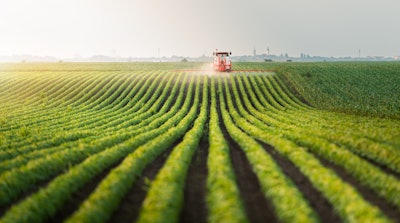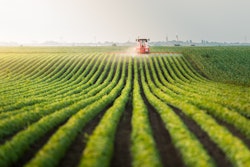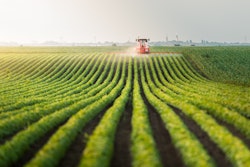
In an era when technology allows tracking a pizza delivery in real-time, how can 40% of global food production be lost or wasted annually? The answer lies in the complex world of food logistics, where a culture of risk aversion hinders efficiencies and the creation of a more sustainable food supply chain.
Despite producing enough food to feed the global population, inefficiencies result in staggering waste, exacerbating food insecurity, environmental degradation, and economic loss. It's time to embrace collaboration and innovation to enhance efficiency, sustainability, and profitability across the supply chain.
The problem: Risk aversion
Risk aversion in food logistics permeates every level of the supply chain. Stakeholders often shy away from implementing new processes and technologies due to fears of disruption, a lack of collaboration, and a culture that prioritizes short-term reactions over long-term strategic planning. This reluctance causes the industry to lag in adopting tools that could significantly improve efficiency and reduce waste.
The aversion to avoid anything that might involve any level of risk comes in many forms:
● Data silos as stakeholders operate in isolation, guarding their information.
● Decision paralysis due to fear of making wrong choices.
● Hesitation to invest in eco-friendly solutions despite consumer demand.
● Rigid long-standing relationships discouraging new products, systems, etc.
● Underutilization of available data for predictive analytics and optimization.
The consequences impact all stakeholders, and food loss alone costs an estimated $218 billion of the GDP in the US. Growers face significant revenue losses from unsold or spoiled products. Distributors struggle with increased operational costs due to suboptimal routing and inventory management. Retailers grapple with stock inconsistencies, leading to lost sales and customer dissatisfaction.
Consumers bear the financial burden through higher prices and reduced product quality. The environmental impact is staggering, with food waste contributing to 6-8% of global greenhouse gas emissions. This damages brand reputations and can lead to regulatory actions being imposed on companies that are unable to manage these issues independently. If companies fail to address these problems, the government will step in, often dictating the solutions, which may not always be the most effective approach.
According to Boston Consulting Group, annual food loss and waste are projected to reach 2.1 billion tons by 2030, worth $1.5 trillion. This represents a moral imperative and a massive economic opportunity for those willing to embrace collaborative innovation.
The power of collaboration
Collaboration within the food supply chain offers a powerful antidote to risk aversion. By working together, stakeholders through the supply chain can overcome individual hesitations and create collective solutions that drive industry-wide progress.
Benefits of collaboration include:
● Equitably sharing innovation benefits creates "win/win" situations that strengthen relationships and improve economics.
● Enhanced data utilization for better forecasting and waste reduction.
● Agile market response to changing demands and disruptions.
● Development of industry-wide sustainable practices.
● Formation of dynamic partnerships allowing quick market pivots.
Overcoming barriers to collaboration
Despite clear benefits, obstacles such as competitive tensions, poor communication, and misaligned objectives often impede effective partnerships. To address these challenges, stakeholders must focus on building trust, aligning goals, and leveraging technology.
Establishing transparency initiatives and shared goals is crucial for fostering trust. This can be achieved through regular communication channels and joint planning sessions that include growers, distributors and retailers. Developing common metrics and incentive structures that reward collaborative behavior creates a shared sense of purpose across the supply chain.
Technology plays a vital role in overcoming collaboration barriers. Shared platforms for real-time information exchange can significantly improve communication and decision-making. Utilizing blockchain technology can enhance traceability, providing a transparent and secure way to share critical location and transit duration data. Implementing Internet of Things (IoT) sensors for real-time monitoring of food quality and storage conditions can contribute to better collaboration by providing accurate, up-to-date information. Adopting new products and technologies for better crop protection and post-harvest efficiencies can extend the shelf life of produce.
How to create change
To foster a culture of collaboration, stakeholders can implement several strategies:
● Develop trust. Implement transparency initiatives through regular feedback sessions, collaboration meetings, and joint planning sessions.
● Embrace technology. Adopt shared platforms for real-time data exchange. Consider implementing a blockchain ledger database for end-to-end supply chain visibility.
● Create shared goals. Establish common KPIs that align priorities across the supply chain. Set collective targets for waste reduction with shared rewards.
● Encourage innovation. Create spaces for cross-company innovation, such as hackathons or innovation labs, and incentivize the discovery of new products and solutions to improve efficiency.
● Start small and scale. Begin with pilot projects demonstrating collaboration's value, then gradually expand efforts across the supply chain.
Imagine a 2030 food logistics ecosystem where blockchain technology ensures farm-to-fork traceability, Artificial intelligence (AI) significantly reduces overproduction, and improved crop protection technology cuts spoilage by 50%. That future isn’t hard to visualize because online marketplaces already use this technology today to verify that all goods on their platform are authentic. This future isn't just possible – it's a future that benefits everyone across the food supply chain.
Producers will see reduced waste and higher margins. Distributors and logistics providers will benefit from optimized operations and new revenue streams. Retailers will improve inventory management and customer satisfaction. Technology providers will find expanding markets for innovative solutions, while investors can expect more stable returns and improved environmental, social, and governance (ESG) performance.
All stakeholders will gain from reduced costs, improved risk management, and enhanced brand value. New business models will emerge in this connected, data-driven industry.
What next?
What are you doing to embrace collaboration now, to shape a more profitable and sustainable future? What habits can you create within your organization to break free from risk aversion? How do you drive your organization to create a food logistics ecosystem that's more efficient, sustainable, and profitable for all? The question isn't whether we can afford to pursue this collaborative future, but whether we can afford not to.



















